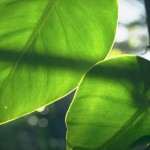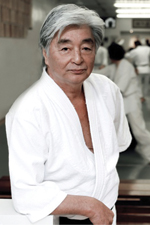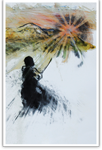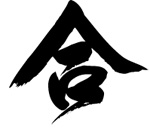 Aikido has become a unifying factor in both my life and in the life of my family. After nearly six years of marriage, my wife and I were finally able to visit her family in Craiova, Romania. It was to be the first time that she had been home since 2005, and the first time she would visit her parents since she was eighteen. Naturally, the planning process of this trip was extensive, and the duration was to exceed a month in length.
Aikido has become a unifying factor in both my life and in the life of my family. After nearly six years of marriage, my wife and I were finally able to visit her family in Craiova, Romania. It was to be the first time that she had been home since 2005, and the first time she would visit her parents since she was eighteen. Naturally, the planning process of this trip was extensive, and the duration was to exceed a month in length.
I had her promise me that I would be able to practice Aikido while there, especially since we were going to be away from home for so long. In preparation, I looked up the local dojos in the towns and villages near her family and began sending e-mails.
The dojo closest to her sister’s house was only a few kilometers from where they lived. In April of 2011, I contacted the Sensei there, [Adrian Albeanu, 2nd Dan] to let him know when we would be in the area. He promptly provided the best dates for me to visit, and he also sent his contact information, so that I could confirm our visit when we arrived.
We arrived in mid July, and after spending a few weeks catching up with family, my opportunity to practice Aikido in Romania was approaching. I planned and expected to go on my own, but to my surprise my spouse’s entire family wanted to come and watch. They had never heard of Aikido, and their impression of martial arts up to that time was that it was something that only young children did, or something that only people that wanted to fight practiced. They knew that I was a schoolteacher in the United States, and that I was relatively passive in manner so, they were not sure why I was so interested in this martial art. The night before my niece insisted that I teach her a few things about Aikido before we went. It certainly peaked her interest and the interest of her parents.
The day came, it was a great class that lasted just over two hours. Although some of the warm up techniques were different, the practice was mostly the same. Most of the lesson was conducted in Romanian, but Sensei Albeanu was also able to speak English, and all of the techniques were called out by their Japanese names, which were familiar to me.
We had a great time. Sensei Albeanu stated at the end of the class that he was impressed that though we had learned from different teachers on different continents, our ways differed little, and the transition was nearly seamless.
It was only at the end of the class that I discovered that he normally did not conduct classes during the summer, but had opened the dojo because I was coming. I felt a bit embarrassed, but was honored by him and his students for going though all the trouble for me.
Even though we left Romania in about mid August, the experience did not end for everyone. My niece had been incessantly nagging her parents to let her start Aikido in September, when the dojo was to officially reopen, and so they enrolled her to start in the beginning of that month. Not only has she continued to practice Aikido, but her cousin, her cousin’s boyfriend, and some of his friends have since joined.
If she pursues it, I promised her that when she comes to visit America I would take her to my sensei’s dojo.
The whole experience has inspired me. Now, every time I leave home I look up the local dojo, and plan to take at least one class while there. I just can’t help it.
Matthew McCann
Shodan, Soto Deshi
Aikido Schools of NJ, Roselle Park
The ‘Aikido Craiova’ website:
http://www.aikidocraiova.ro/en/blog/2011/08/31/un-oaspete-deosebit-la-clubul-nostru/












